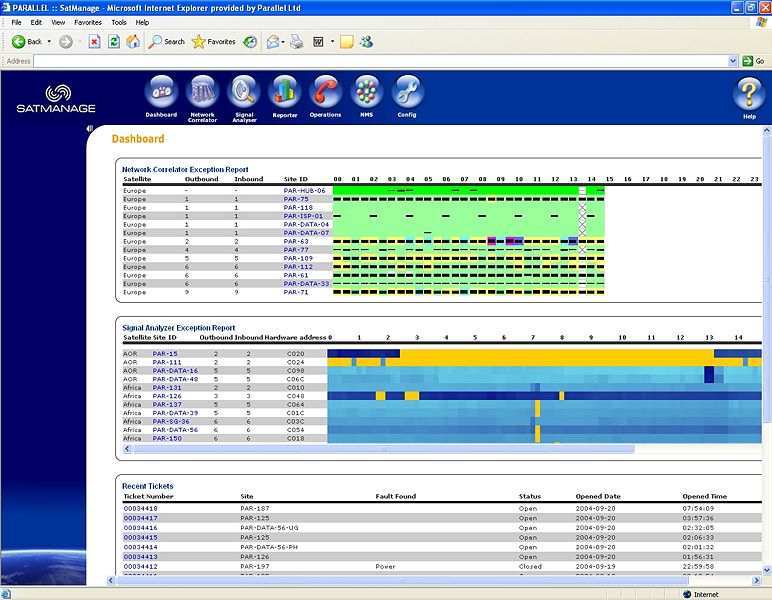About the Author

Guy Adams is the Chief Technical Officer at Parallel Ltd. In 2004, he was named the UK's Network Professional of the Year.
He has overseen the development of a satellite network management system now used in many of the world's largest and most prestigious organisations. His software's groundbreaking data correlation, visual displays and trouble ticketing automation now form the basis of SatManage, a comprehensive satellite network management suite, which is based around a MySQL 5.1 core. This system also won the prestigious British Computer Society Technology Award in 2005.
An experienced speaker, Guy regularly addresses university students in the UK and key industry events globally, as well as writing many technical white papers and magazine articles. The merits of MySQL and partitioning regularly feature in his presentations.
Using Partitioning to Manage Satellite Networks
Overview
Parallel Ltd. was founded in 1998 and is based in Milton Keynes, United Kingdom. Our main product is SatManage, a web-based application for managing satellite networks.
At Parallel we've used Partitioning since the very first release of 5.1 (sometime December 05). We're now on MySQL 5.1.20 and 5.1.22 and we started development using partitioning with MySQL.5.1.3.
Purpose of our application
SatManage is the world's only Management System specifically designed for Satellite Networks. In analyzing satellite circuits rapid access to significant amounts of history is essential - we need direct CGI speed access to historical data sets in up to 10 tables, each one many tens of gigabytes in size and with 500M+ rows in. Our development systems run on CentOS 5.2. The application is written in Perl, Java and C++ and is deployed on CentOS 5.2 using a Dell R900 Server, 8*15k SAS Drives in a RAID 10 array.

How partitioning meets our needs
Our product historically used an Oracle backend, and after implementing simple date based range partitioning we got a 20-30 time performance increase in our queries. We had used MySQL in other more minor products we had developed, but we couldn’t move to it until partitioning was implemented. In Dec 05 we started to test MySQL partitioning, where partitioning syntax was supported but the optimizations were not in place. As soon as the optimizations were put in, we were able to run a side by side comparison against unpartitioned tables and Oracle partitions. Not only did we get in MySQL a 31+ times performance increase, but the MySQL version ran nearly twice as fast as the same Oracle configuration in a like for like test.
The documentation has been pretty useful documenting syntax and method, although it would have been useful to have more examples of partitioning schemas used in the real world and the performance gains. However, I believe that setting up the ‘correct’ set of portioning and index configurations in a particular situation is as much of an art as a science, and really forces DBAs and Developers to understand exactly what MySQL does behind the scenes, and how best to ‘help’ with the right partitioning setup. It is really down to real MySQL users to detail their situation, what partitioning schemas they tested and how they performed. I don’t know if there is currently a place for this, but if not it would be a very useful addition to help new DBAs with partitioning schemas.
We have tested other databases, but have not found anything as fast as well partitioned MySQL for our data sets. It may be the case that in some other situations Oracle is faster, but MySQL is the database for us! It is also worth mentioning that in 3 years of using MySQL in one form or another, to my knowledge we have never lost a row of data even with hard crashes and unscheduled power outages.
We have built our own engine to automatically merge older partitions e.g. to keep a 1 day, 1 week, 1 month per partition going backwards through time. We are very much looking forward to being able to change the Engine type for each partition. The ability to change the engine types to get ACID compliance on the ‘current’ partition, but compressed, fast read-only access to older data will be enormously powerful.
We have been using versions of 5.1 in production environments for very high profile clients (e.g. the United Nations) for over 18 months, after carefully testing each release in our development environment. We have found a few bugs in certain releases, all of which already had bugs opened for them and were all fixed in the subsequent release. We maintain a test script which has examples of all the functionality we use in various queries so we can easily test each new release and be fairly sure that if a new release passes our test script, it is OK for us to deploy.
Comments?
Read and post comments on this article in the MySQL Forums. There are currently 1 comments.

